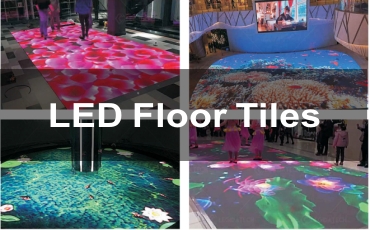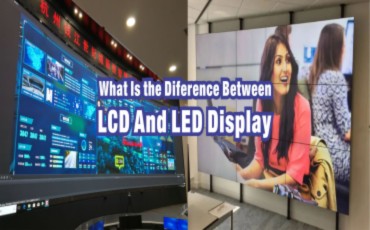In the process of modernism, LED screens are appearing in more and more places, playing an important role in display and promotion.
The new large LED screen display device will replace the traditional TV set to become the centre of people’s enjoyment of information and multimedia content.
In fact, not all people understand the basic knowledge of LED Panels.
How to choose the right LED Video Wall is also a challenge.
In this article, I would like to introduce the difference between synchronous LED display and asynchronous LED display.
If we imagine the LED display as a human body, the LED Display Control System must be as important as the brain.
So, first let’s understand the LED Display Control System and the two different LED display control methods.
1.What is the LED Display Control System?
LED Display Control System through different control methods to deal with the instructions, which determines the content of the LED display, it can be video, live screen or text and other different forms.
The control methods of LED displays we are discussing here generally focus on synchronous and asynchronous control.
The synchronized control system mainly consists of a Sending card, Receiving card and related debugging software in the computer.
When we operating the synchronized control LED display, we need to make sure that the LED display screen operates in sync with the LED display signal source.
The playback progress of the signal source will be synchronized with the LED display screen.

With the popularity of the application of video processors, can be used as led display screen synchronous signal source products have also been a wide range of expansion: computers, jukeboxes, VCRs, set-top boxes, video cameras, DVD …..
And so on everything can be output: VGA, DVI, HDMI, AV …..and other signal devices can be used as led display screen signal source.
Most of the stage rental LED displays, indoor led displays and church LED displays that we often discuss are synchronously controlled LED displays.

2. What is an asynchronous control system?
The asynchronous control system mainly consists of a Media Player box (memory functions), Receiving card and related debugging software in the computer or mobile phone.
When we operate asynchronous control LED display, LED display screen and large screen signal source do not have to run synchronously which means you don’t have to connect to the input equipment with wires, the signal source playback progress and display screen can be out of sync.
Asynchronous LED displays are mainly controlled through asynchronous cards, Media player box, and other equipment devices that have their own storage and can perform simple content processing.

Most of advertising LED displays such as outdoor advertising LED displays and light pole LED displays that broadcast simple advertising content are asynchronous LED displays.
After a brief understanding of the different LED display control systems, we may concern as follow .

3. How do we choose the right LED display for a specific project?
Should we choose synchronous control LED display or asynchronous control LED display?
3.1 Synchronous control LED display
Synchronized control LED display is configured with a synchronized control system, which can be simply understood as an LED display that plays the content of the signal source of the LED display in real time, and when the signal source stops working, the LED display also stops showing.

Advantage: Signal real-time update can be switched arbitrarily, without the influence of equipment storage space, content format and so on.
Disadvantage: The LED source device must be switched on synchronously.
Applicable locations: live streaming, video conferencing, concerts ….. and other locations that need to display the content of the signal source in a timely manner and seek to switch and control the playback content at any time.

Then for the LED display project on the playback content requirements are not high, do not need real-time control of the playback, just show part of the advertising content, slogans and signage and scrolling video, notice.
It is necessary to choose asynchronous control LED display on the one hand can reduce the risk of uncertainty, on the other hand, and can save some of the appropriate cost.
3.2 Asynchronously controlled LED display
Asynchronous LED display configured with asynchronous control system can be simply understood as LED display with memory function.

Advantage:Media player box or asynchronous cards can be asynchronized with the power supply of the LED screen, and the content that needs to be played can be uploaded and then looped according to demand.
Disadvantages:The length and quality of the playback content is limited by the memory size of the offline device, the format of the playback content is limited by the recognition ability of the offline system, and the demonstration can only start after completing the effective uploading, and real-time content update is not possible.
Asynchronous control LED display is mainly used in places where the frequency of content update is low, the broadcast content is relatively short.

And it is not easy or necessary to use synchronous control system, such as highways, shopping malls, buildings and other places.
4.Conclusion
Last but not least, if we have never understood the LED display industry, but we want to start an LED display project from now on, we should have a basic understanding of LED display, such as understanding the difference between synchronous control LED display and asynchronous control LED display
If we have been working in the LED display industry, we can still discuss with LED display suppliers about the choice of LED display control methods.
Because the LED display industry is developing very fast, comprehensive knowledge of LED display will help you with your LED display project.
Author: Lucy Huang
FAQ
- Are synchronously controlled LED displays better than asynchronously controlled LED displays?
The choice of LED display depends on the customer’s ideal display effect, for stage activities and exhibition presentations and other LED display projects that need to present a variety of picture effects, we recommend synchronous control LED display. For projects such as giant buildings and signage, we recommend asynchronous control LED displays.
2. Can I use an asynchronous control system for LED displays for staged events?
In the case where the LED display only serves as a backdrop and does not need to play the performance screen in real time, the LED display can be configured with an asynchronous control system, such as a media playback box, to play the stored content.
- Are all 3D LED displays synchronized LED displays?
3D effect has nothing to do with the LED Display Control System, only with the playback of the signal source, whether synchronous control or asynchronous control of the display, we play the signal source determines the picture effect of the LED display.
Whether synchronous control system or asynchronous control system, the purpose is to control the LED display to achieve the picture effect that the customer wants.
In simple words, synchronous control LED display is configured with video processor to process multiple information sources and present richer picture.
Asynchronous control LED display is configured with media playback box to process a single source of information and present the stored picture.
The choice is flexible.
- Can I choose both synchronous and asynchronous control systems?
It can be configured with both a video processor and a media playback box, and the LED display can be either a synchronous LED display or an asynchronous LED display. But choosing both control methods at the same time will cost more.





